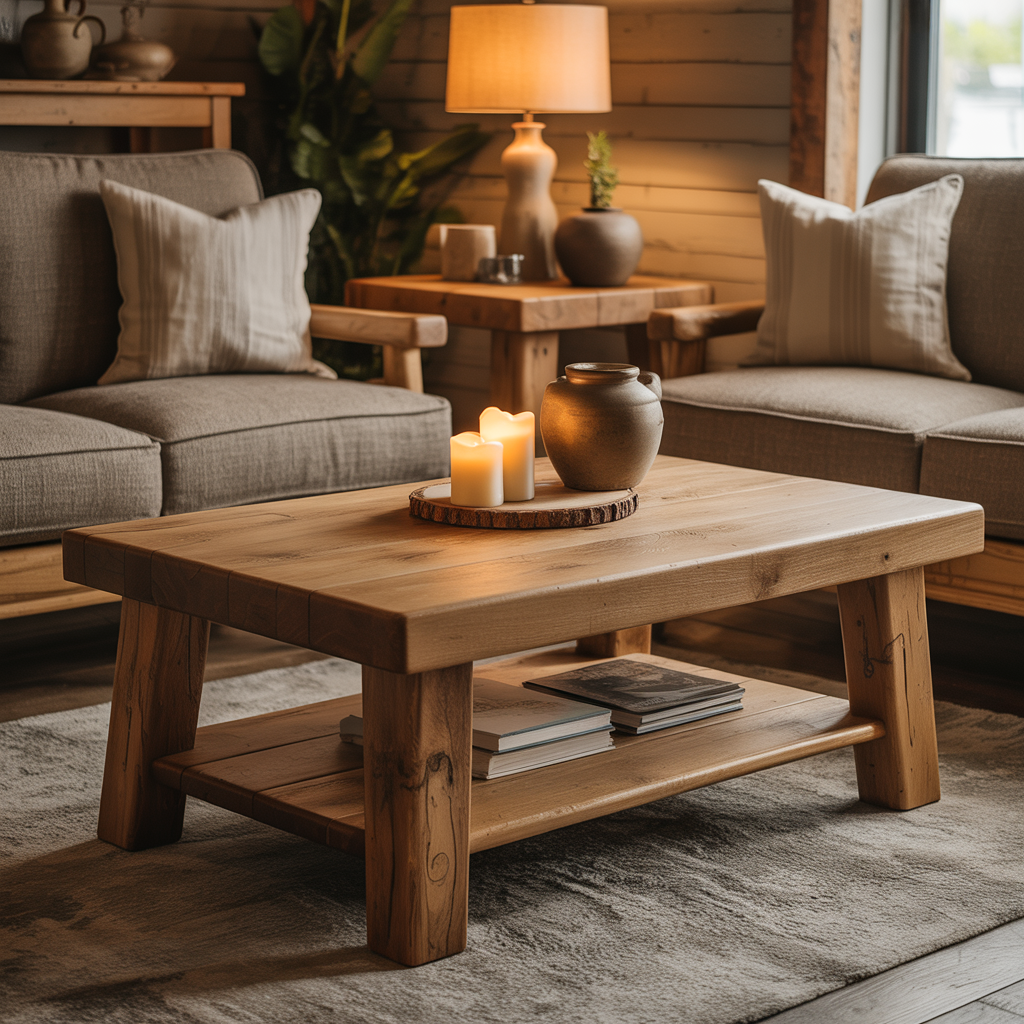End & Side Tables Inspiration
How To Pair End Tables With Coffee Tables And Sofas
A well-designed living room depends on balance — both visually and functionally. Pairing end tables with coffee tables and sofas may seem simple, but the right combination can dramatically change how your space looks and feels. Choosing matching heights, complementary materials, and coordinated shapes ensures your living room feels cohesive and comfortable. In this guide, we’ll explore how to select and style these essential pieces for harmony and convenience. For more design inspiration, visit our End & Side Tables Inspiration category.
Understanding the role of each furniture piece
Each item in your living room serves a different purpose. The sofa anchors the seating area, the coffee table ties everything together, and end tables add convenience while enhancing symmetry. When chosen thoughtfully, these three pieces create a unified look that’s both practical and beautiful.
- End tables provide accessibility — a place for lamps, drinks, or books next to the sofa.
- Coffee tables serve as a central point for gatherings, decor, or casual dining.
- Sofas set the tone for proportions, determining the ideal table height and distance.
Start with size and proportion
Scale is crucial. Your end and coffee tables should feel balanced with your sofa. End tables typically match the height of your sofa’s arm or sit within two inches above or below it. Coffee tables should align with the sofa seat height or be slightly lower to maintain visual flow.
Ideal dimensions
- Coffee table height: 16–18 inches or about 1–2 inches lower than your sofa seat.
- End table height: 22–26 inches, ideally within 2 inches of the armrest height.
- Distance: Leave around 18 inches between the sofa and coffee table for comfort and easy movement.
Matching shapes and layouts
The shape of your tables influences the mood and flow of the room. Round tables introduce softness and organic flow, while rectangular or square shapes add structure and definition. Matching or mixing these shapes strategically can help highlight your design style.
Round tables
Round coffee tables work beautifully with sectionals or curved sofas, offering smooth circulation. Pair them with smaller circular or pedestal-style end tables to keep proportions balanced. You can also explore compact designs from our End & Side Tables collection for more options.
Rectangular and square tables
Rectangular tables suit longer sofas or narrow living rooms. Combine them with square end tables for a cohesive look, or add contrast by choosing open metal-framed tables to lighten the aesthetic.
Coordinating materials and finishes
While matching sets can look elegant, mixing materials adds personality. The key is to maintain at least one shared element, such as a wood tone, metal detail, or color accent, across all tables and your sofa.
- Wood & metal: Combine warm wood surfaces with black or brass frames for a modern rustic feel.
- Marble & glass: Ideal for contemporary spaces that need a touch of sophistication.
- Natural textures: Mix rattan or oak with neutral upholstery for organic warmth.
These combinations also pair nicely with coordinated furniture such as TV stands or benches in matching finishes to create continuity throughout your home.
Styling your tables
Styling your tables is where your personal touch shines. Keep function in mind but don’t be afraid to layer textures and decor pieces that complement your sofa. Use trays to organize smaller items, stack books for height variation, and add greenery for freshness.
For end tables
End tables look best with purposeful decor — a lamp for soft lighting, a ceramic vase, or a small sculpture. Avoid overcrowding to maintain open, usable surfaces.
For coffee tables
The coffee table can act as your living room’s visual centerpiece. Combine low-profile decor with seasonal elements such as candles or floral arrangements. Check out our Coffee Tables Ideas & Styling category for more ways to decorate them effectively.
Arranging for comfort and flow
Placement affects comfort and movement. Coffee tables should align with the center of your sofa or seating group. End tables can flank sofas symmetrically or be staggered for a more dynamic layout. The goal is to ensure every seat has convenient access to a surface without cluttering the space.
Small living rooms: Use nesting or pedestal end tables to save space. Round coffee tables help improve flow in tight layouts.
Large living rooms: Combine rectangular coffee tables with wide side tables for balance. Complement with low benches or coffee tables nearby to extend the cohesive aesthetic.
Lighting and accessories
Proper lighting enhances your furniture’s presence. Place lamps on end tables to add vertical balance, and consider a pendant light centered above the coffee table. Accessories like woven trays, ceramic dishes, or books can tie colors from your sofa’s fabric into your tables’ finish.
For coordinated lighting and accessory setups, explore design insights in our TV Stands Design & Guides — these principles apply to styling other surfaces throughout the home.
Examples of cohesive combinations
Imagine a contemporary living room with a neutral sofa, a walnut rectangular coffee table, and two matching wooden end tables. The wood tones connect across all pieces, creating balance.
Or, picture a Scandinavian setup: a white round coffee table, two light oak end tables, and a beige fabric sofa — minimal, functional, and perfectly coordinated.
Conclusion
Pairing end tables with coffee tables and sofas is about more than matching shapes or materials — it’s about balance, comfort, and purpose. Focus on proportion, maintain visual harmony, and use complementary finishes to unify the space. With the right mix, your living room becomes both stylish and livable.

